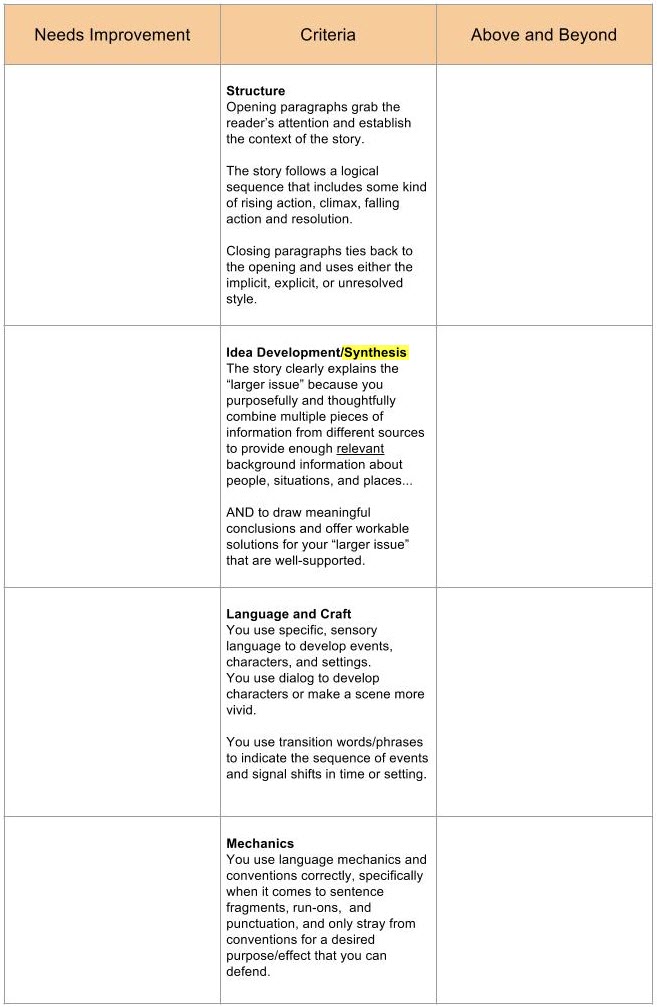A couple weeks ago, while delivering a professional development workshop on Assessing the 21st Century Capacities, some questions were raised about the scoring of analytic rubrics. Developing criteria for rubrics that address content standards as well as capacity standards in kid-friendly language can be really tough, but assigning point values and translating these point values into actual grades can be even tougher.
For the first challenge, the district has developed rubrics for each of our 21st century capacities that are generic enough to address K-12 curricula across content areas. The trick is to tailor the language of these generic rubrics to our specific assessments and blend content standards with capacity standards. While most of you probably prefer to spend your non-instructional time planning engaging lessons and designing authentic assessments over writing rubrics for these assessments, I actually enjoy the challenge of writing analytic rubrics and developing checklists that help kids understand the criteria and help teachers measure growth. So let me know if you’d like me to take a stab at developing or revising one of your PBA rubrics in a way that addresses content and capacities. My door is always open.
As for the second challenge–assigning point values and translating them into actual grades–let’s turn to Jennifer Gonzalez and a post she wrote for her excellent Cult of Pedagogy blog. In it she describes the practice of using a single-point analytic rubric–formatively to give students feedback throughout the learning process, and summatively to assign grades. I love this approach for a number of reasons: the single-point rubric takes a fraction of the time to write, it is a great reflection tool for students, AND it’s ideal for assessing student growth in the capacities. Here’s an example of a single-point rubric Ms Gonzalez uses in her post for assessing a journalistic piece of writing with a narrative bent, which I’ve modified down below by more explicitly measuring student growth in the capacity of Synthesis. For the actual scoring process you’ll have to read the blog post.
Of course, like anything related to student grades, there are some potential downsides–with this approach subjectivity and time come to mind. But check out the article and let me know what you think in the comments.

